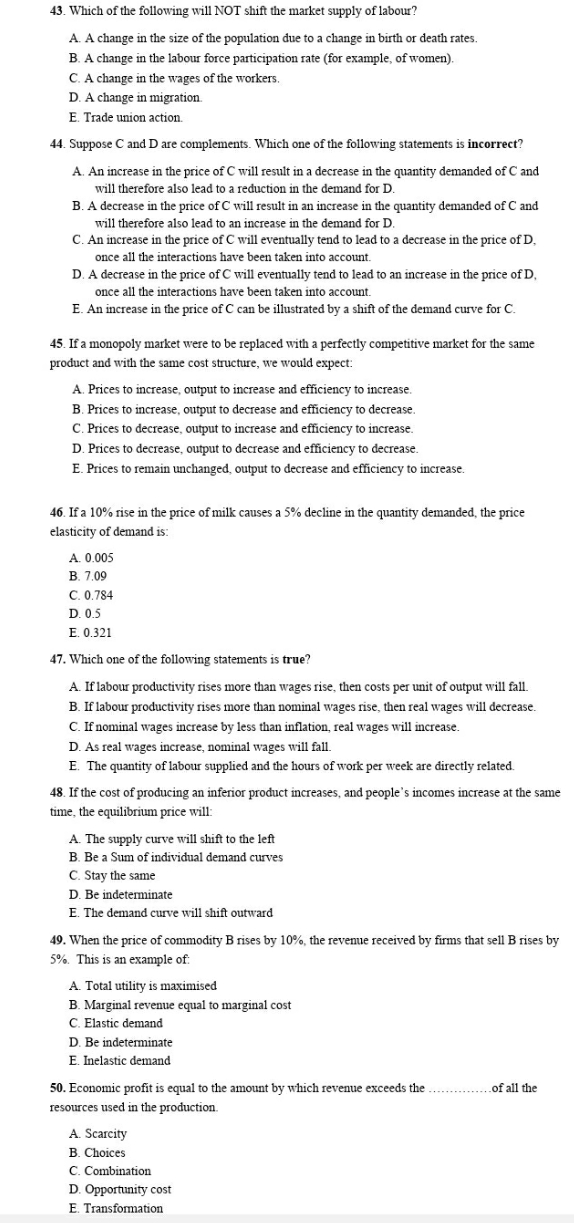choose the correct answer
43. Which of the following will NOT shift the market supply of labour? A. A change in the size of the population due to a change in birth or death rates. B. A change in the labour force participation rate (for example, of women). C. A change in the wages of the workers. D. A change in migration. E. Trade union action. 44. Suppose C and D are complements. Which one of the following statements is incorrect? A. An increase in the price of C will result in a decrease in the quantity demanded of C and will therefore also lead to a reduction in the demand for D. B. A decrease in the price of C will result in an increase in the quantity demanded of C and will therefore also lead to an increase in the demand for D. C. An increase in the price of C will eventually tend to lead to a decrease in the price of D, once all the interactions have been taken into account. D. A decrease in the price of C will eventually tend to lead to an increase in the price of D, once all the interactions have been taken into account. E. An increase in the price of C can be illustrated by a shift of the demand curve for C. 45. If a monopoly market were to be replaced with a perfectly competitive market for the same product and with the same cost structure, we would expect: A. Prices to increase, output to increase and efficiency to increase. B. Prices to increase, output to decrease and efficiency to decrease. C. Prices to decrease, output to increase and efficiency to increase. D. Prices to decrease, output to decrease and efficiency to decrease. E. Prices to remain unchanged, output to decrease and efficiency to increase. 46. If a 10% rise in the price of milk causes a 5% decline in the quantity demanded, the price elasticity of demand is: A. 0.005 B. 7.09 C. 0.784 D. 0.5 E. 0.321 47. Which one of the following statements is true? A. If labour productivity rises more than wages rise, then costs per unit of output will fall. B. If labour productivity rises more than nominal wages rise, then real wages will decrease. C. If nominal wages increase by less than inflation, real wages will increase. D. As real wages increase, nominal wages will fall. E. The quantity of labour supplied and the hours of work per week are directly related. 48. If the cost of producing an inferior product increases, and people's incomes increase at the same time, the equilibrium price will: A. The supply curve will shift to the left B. Be a Sum of individual demand curves C. Stay the same D. Be indeterminate E. The demand curve will shift outward 49. When the price of commodity B rises by 10%, the revenue received by firms that sell B rises by 5%. This is an example of: A. Total utility is maximised B. Marginal revenue equal to marginal cost C. Elastic demand D. Be indeterminate E. Inelastic demand 50. Economic profit is equal to the amount by which revenue exceeds the ...............of all the resources used in the production. A. Scarcity B. Choices C. Combination D. Opportunity cost E. Transformation







